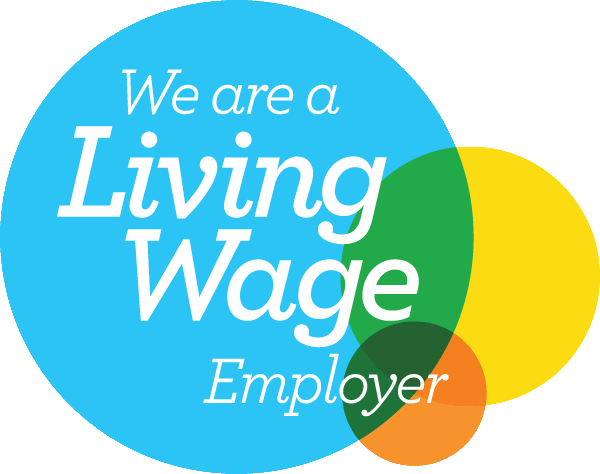In this article I will outline for the reader the Children and Young People’s Improving Access to Psychological Therapies project (CYP-IAPT), including where it came from, where we are now, and the challenges we have faced on the way.
In keeping with the associated literature for this edition of The Bridge, this article will focus on those areas in CYP-IAPT that have utilised CBT for children and young people (CYP) and their families. Finally, the article will discuss the future of this ambitious project and how we can continue to carry on delivering evidence-based therapies to as many CYP and families as need it.
What is CYP-IAPT and where did it come from?
CYP-IAPT is an innovative and transformational project undertaken by Health Education England (HEE), NHS England (NHSE), multiple Children’s Mental Health Services (NHS and Voluntary Sector), Higher Education Institutions across England and, now in our newest developments, Department for Education and Local Authority/Educational institutions. The focus is on transforming mental health services for CYP and their families (DoH & DfE, 2018).
Now in its seventh year the initial aims of the project were (and continue to be) to improve mental health services for CYP and their families through 5 core principles (CAMHS press, 2014):
- To improve accessibility of mental health services to all those who need it.
- To improve participation in the development and running of CYP-MH services by those who use the services.
- To increase the use of Routine Outcome Measures (ROMS) so that CYP services can more reliably measure change/improvements in distressing symptomology.
- To develop a (non-blaming) culture of accountability in CYP-MH services.
- To develop the range of evidence-based psychological therapies that are delivered in CYP-MH services, and for them to be delivered by qualified and accredited psychological therapists.
Principle 5 will be the key focus of this article and is the one I am most passionate about as the Clinical Lead for Northumbria University’s CYP-IAPT programmes of training for practitioners, and also as a Consultant Clinical Psychologist working in CAMHS in the NHS.
The transformative component of the CYP-IAPT initiative took the key evidence-based therapies (based on NICE guidlines) to develop Post Graduate (full and part-time) training programs including several therapeutic modalities from systemic, to interpersonal therapy, parenting interventions, to counselling. Although these are all key evidenced-based modalities this article will focus on CBT-based therapies including:
- High intensity Cognitive Behavioural Therapy (HI-CBT).
- Low intensity CBT (LI-CBT) based interventions, delivered in MH services and schools within the Educational Mental Health Practitioner (EMHP) and Children’s Wellbeing Practitioner (CWP) roles.
As a transformative project, programmes were also developed to train those who provide supervision and leadership in CYP-MH services, so that the project could have an impact at all levels in CYP-MH services.
Where are we now?
Having now trained thousands of therapists across the country, the aim of the CYP-IAPT initiative is now to move from one of transformation to one of ‘business as usual’. In theory most CYP-MH services should now have plenty of highly trained staff to deliver evidence-based therapies across England. This considered, the focus has now moved to early intervention. The newly developed roles of CWP and EMHP work into both CYP-MH services and schools respectively to identify those CYP who are at risk of developing, or have already developed, mild to moderate symptoms of anxiety and depression. These innovative roles aim to prevent CYP needing to access tertiary MH services as they can deliver highly evidenced (CBT-based), manualised interventions to CYP and their families. These practitioners are highly trained and closely supervised/assessed to ensure fidelity to the specialised psychological interventions, which include:
- Behavioural activation (BA).
- Parent-led CBT (PL-CBT).
- Graded Exposure and several other anxiety-based interventions.
In addition to these interventions, CWP and EMHP practitioners are also trained to quickly assess the key needs for the CYP based on Routine Outcome Measures (ROMS), clinical expertise, and most critically on the goals the CYP and their family set.
As discussed above, there is not enough scope within this article to explore the highly evidenced-based therapeutic modalities that are non CBT-based, nor is there scope to discuss all of the CBT-based interventions that are delivered under the umbrella of CYP-IAPT. With that in mind, I will focus on two particularly exciting developments in CYP-MH, BA and PL-CBT.
Behavioural Activation
Behaviour activation is a discreet intervention which has origins in Behavioural theory and CBT (NHS, 2018). In BA the patient is encouraged, not simply to increase activity levels, but after a detailed functional assessment they are supported to engage in activities, which are more likely to positively reinforce closeness to others, enjoyment, and a sense of achievement.
A recent thought-provoking randomised controlled non-inferior trial looked at a (heavily evidenced-based) more traditional CBT approach for depression versus behavioural activation in the treatment of major depressive disorder (Richards et al., 2016). Richards et al’s (2016) study found similar efficacy in both conditions, however, the crucial difference is that BA can be delivered by more junior staff and on a less intensive basis, meaning that it can be delivered by well trained, but less experienced team members.
Studies such as this clearly indicate that LI CBT practitioners can be used in a cost effective way. Although the “COBRA” (Richards et al, 2016) study was conducted with adults, there is now a clear and expanding evidence base for the effective use of BA with CYP (Pass et al. 2018; 2018).
Parent-led CBT
It is a common misconception that CBT can only be delivered on a one to one basis; however, there is an ever-increasing evidence base for the use of CBT methods with families (Friedberg, 2006). Parent-led CBT is a manualised intervention which aims to train parents to support their children to overcome anxiety. Parents are taught simple questioning styles and behavioural techniques which allow their CYP to engage more actively in challenging negative thoughts and changing toxic behaviours (Brittnay et al., 2017) the approach developing a strong evidence base (Thirlwall, Cooper, Creswell, 2017) and is used in CYP-IAPT programmes. Like BA, PL-CBT is effective when delivered by less experienced staff, supporting further the role for LI-CBT practitioners.

Challenges faced
Despite training thousands of HI and LI practitioners across England, it is clear that MH services are still finding it a challenge to utilise these highly trained specialists. Anecdotal feedback gathered from CYP-IAPT trainees and course leads across the country suggests that, upon returning full time to their hosting service, practitioners are unable to complete specialist interventions but instead they are returning to generic CYP mental health roles. This could be due to a multitude of reasons and is the subject of several prospective studies for our team. Feedback from trainees and course leaders across the country suggests that resource pressures, lack of understanding of CYP-IAPT in leadership, and lack of appropriate supervision may be some of the key contributors to CYP-IAPT trainees not using their newly acquired skills.
Lack of supervision and little opportunity for practitioners to continue using their therapeutic skills poses further risks too. It is well documented that effective therapy requires competent supervision (Alfonsson, S., Parling, T., Spännargård, A., Andersson, G. & Lundgren, T., 2018) and without this there is a risk of digression from fidelity to the therapeutic model.
Finally, problems with resourcing can pose a risk to the efficacy of therapy, forcing practitioners to see the CYP less often than recommended or for fewer sessions than recommended, leaving them open to delivering a ‘sub-therapeutic dose’ of therapy.
Where are we going?
Having now trained thousands of HI and LI therapists across England, it is time to make sure that all of these highly trained specialists are utilised effectively. By making clear adjustments to the infrastructure of CYP-MH services to accommodate these specialist practitioners, initial results from national evaluations show the efficacy and improvements in outcomes for our CYP and their families (Fuggle et al 2019). By embracing the LI practitioner roles, services stand to gain in the amount of CYP they can effectively treat and free up space for the HI practitioners to see those CYP who need more intensive work.
References
Transforming children and young people’s mental health provision: a green paper (2017 and 2018). Department of Health and Social Care and Department for Education
CYP IAPT principles in Child & Adolescent Mental Health services, values and standards
“Delivering With and Delivering Well” (2014). CAMHS Press ISBN 978-0-9572096-9-5.
Types of Talking Therapies (2018) https://www.nhs.uk/conditions/stress-anxiety-depression/types-of-therapy.
D.A., Ekers, D. McMillan, D., Byford, S,. & Warren FC, (2016). Cost and Outcome of Behavioural Activation versus Cognitive Behavioural Therapy for Depression (COBRA): a randomised, controlled, non-inferiority trial. DOI:https://doi.org/10.1016/S0140-6736(16)31140-0.
Friedberg R.D. (2006) A Cognitive-Behavioral Approach to Family Therapy. Journal Contemporary Psychotherapy 36:159–165. DOI 10.1007/s10879-006-9020-2.
Brittany M. Rudy, B.M., Zavrou, S., Johnco, C., Storch, E.A. & Lewin (2017). Parent-Led Exposure Therapy: A Pilot Study of a Brief Behavioral Treatment for Anxiety in Young Children: Journal of Child and Family Studies volume 26, pages2475–2484(2017).
Thirlwall K., Cooper P., Creswell C., (2017) Guided parent-delivered cognitive behavioral therapy for childhood anxiety: Predictors of treatment response, Journal of Anxiety Disorders. Volume 45, January 2017, Pages 43-48.
Alfonsson, S., Parling, T., Spännargård, A., Andersson, G. & Lundgren, T. (2018) The effects of clinical supervision on supervisees and patients in cognitive behavioral therapy: a systematic review. Cognitive Behaviour Therapy. Volume 47, – Issue 3 206-228



